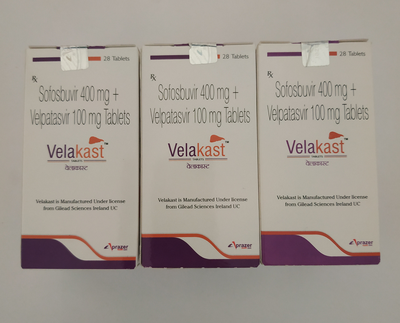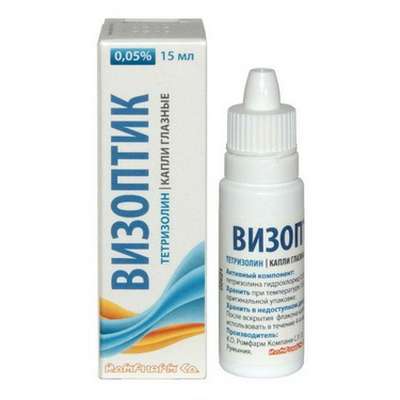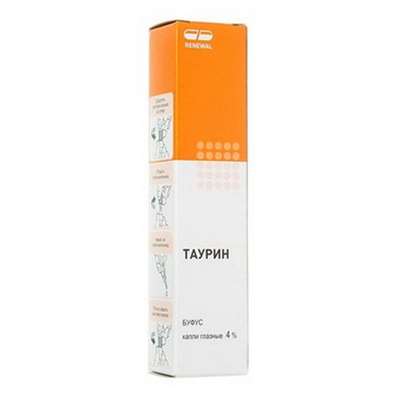Instruction to use: Buscopan
I want this, give me price
Active substance: Hyoscine butylbromide
ATX Code A03BB01 Hyoscine butylbromide
Pharmacological group
Antispasmodic herbal [m-Cholinolytics]
The nosological classification (ICD-10)
K25 Gastric ulcer
Helicobacter pylori, Pain syndrome in gastric ulcer, Pain syndrome in gastric ulcer and duodenal ulcer, Inflammation of the gastric mucosa, Inflammation of the gastrointestinal mucosa, Benign gastric ulcer, The disease of the stomach and duodenum, asotsiirovannoe with Helicobacter pylori, Aggravation gastroduodenita on the background of peptic ulcer, Exacerbation of peptic ulcer, The aggravation of gastric ulcer, The organic gastrointestinal disease, Peptic ulcer of the stomach and duodenum, Postoperative gastric ulcer,Recurrent ulcers, Symptomatic gastric ulcers, Chronic inflammatory disease of the upper gastrointestinal tract, associated with Helicobacter pylori,Helicobacter pylori eradication, Erosive and ulcerative lesions of the stomach, Erosive lesions of the stomach, The erosion of the gastric mucosa, Peptic ulcer disease, Stomach ulcer, Gastric lesion,Ulcerative lesions of the stomach, Symptomatic ulcers of the stomach and duodenum
K26 Duodenal Ulcer
Pain with duodenal ulcer, Pain syndrome in gastric ulcer and duodenal ulcer, The disease of the stomach and duodenum, asotsiirovannoe with Helicobacter pylori, Exacerbation of peptic ulcer, The worsening of duodenal ulcer, Peptic ulcer of the stomach and duodenum, Relapse of duodenal ulcers, Symptomatic ulcers of the stomach and duodenum, Helicobacter pylori eradication, Erosive and ulcerative lesions of the duodenum, Erosive-ulcerative lesions of duodenal ulcers associated with Helicobacter pylori, Erosive lesions of the duodenum, Duodenal ulcer, Ulcerative lesions of the duodenum
K31.3 pilorospazme, not elsewhere classified
Spasm of smooth muscle in diseases of the digestive tract, Spasms of the digestive tract smooth muscle, stomach Cramps, Spasms of the pylorus, Spastic condition of the gastrointestinal tract, pilorospazme, pyloric spasm
K81 Cholecystitis
acute cholecystitis, chronic cholecystitis, Empyema of the gall bladder, holetsistopatii, Holetsistogepatit,Cholecystitis, obstructive cholecystitis
K82.8.0 * Dyskinesia of the gallbladder and biliary tract
Biliary obstruction, Biliary reflux gastritis, Biliary reflux esophagitis, biliary sludge, Pain smooth muscle spasm, Pain spasm of smooth muscles (renal and biliary colic, intestinal spasms, dysmenorrhea), Pain spasm of smooth muscles of internal organs, Pain spasm of smooth muscles of internal organs (kidney and biliary colic, intestinal spasms, dysmenorrhea), Gipermotornaya biliary dyskinesia, Hypokinesia of the gall bladder, Hypokinetic dyskinesia of the gallbladder, Biliary dyskinesia, Dyskinesia of the gallbladder,Dyskinesia of biliary tract, biliary colic, Bile reflux,Violation of bile secretion, Violation of the outflow of bile, Subacute and chronic diseases of the biliary tract, The spasm of the biliary tract, Biliary tract spasm, Spastic biliary dyskinesia, Spasmodic dyskinesia of the gallbladder, Spastic condition of the gastrointestinal tract
N23 Renal colic unspecified
Pain in renal colic, Pain smooth muscle spasm, Pain spasm of smooth muscles (renal and biliary colic, intestinal spasms, dysmenorrhea), Pain spasm of smooth muscles of internal organs, Pain spasm of smooth muscles of internal organs (kidney and biliary colic, intestinal spasms, dysmenorrhea), renal Colic, ureteral colic, Renal colic, Renal colic with urolithiasis, Kidney disease,Spasm of smooth muscle in diseases of the urinary system, The spasm of the urinary tract, The spasm of the ureter, The spasm of the ureters, Spasms of the urinary tract, Spasms of the urinary tract
Unspecified N94.6 Dysmenorrhea
Pain during menstruationį Functional disorders of the menstrual cycle, Menstrual cramps, Emmeniopathy, Pain during menstruation, Painful menstrual irregularities, algomenorrhea, algomenoreya, Pain smooth muscle spasm, Pain spasm of smooth muscles (renal and biliary colic, intestinal spasms, dysmenorrhea), Pain spasm of smooth muscles of internal organs (kidney and biliary colic, intestinal spasms, dysmenorrhea), Disalgomenoreya, dysmenorrheal, Dysmenorrhea (essential) (Exfoliative), menstrual disorder, menstruation painful, metrorrhagia, Violation of the menstrual cycle, Menstrual irregularities, Prolaktinzavisimoe menstrual disorders, Prolaktinzavisimoe menstrual dysfunction, Pain spasm of smooth muscles of internal organs, Spasmodic dysmenorrheal, Primary disalgomenoreya
R10.4 Other and unspecified abdominal pain
Abdominal pain, Gastrointestinal spasm, intestinal colic, Colic in infants, The feeling of fullness, Resi abdominal, Spasm of smooth muscle in diseases of the digestive tract, The spasm of the biliary tract, Biliary tract spasm, enterospasm, Spasm of the digestive tract, Spasms of the digestive tract smooth muscle, stomach Cramps, gastrointestinal spasms, Spastic condition of the gastrointestinal tract,intestinal tenesmus, Feeling of fullness, Baby colic
Code CAS 149-64-4
Structure and Composition
The tablets covered with a sugar coating of Table 1.
hyoscine butylbromide-N-10mg
Excipients: dibasic calcium phosphate; corn starch; soluble starch; colloidal silicon dioxide; tartaric acid; stearic acid / palmitic
shell: PVP; sucrose; talc; acacia; titanium dioxide; polyethylene glycol 6000; carnauba wax; white wax
in blister 20 pcs .; in one blister box.
Suppositories for rectal administration of 1 supp.
hyoscine butylbromide-N-10mg
Other ingredients: purified water; W45 solid fat
in a strip of 5 pcs .; in box 2 of the strip.
The drug forms
Tablets: white, round, biconvex tablets, sugar-coated.
Suppositories: white or ivory, smooth, oblong.
pharmachologic effect
m-anticholinergic.
pharmacodynamics
Has antispasmodic effect on the smooth muscles of internal organs, reduces the secretion of digestive glands. As a quaternary ammonium derivative, it does not pass through the BBB, so no anticholinergic effect on the CNS.
Indications
renal colic;
biliary colic;
spastic dyskinesia of the biliary tract and gall bladder;
cholecystitis;
intestinal colic;
pilorospazm;
gastric ulcer and duodenal ulcer in the acute phase (in the complex therapy);
algomenorrhea.
Contraindications
Hypersensitivity to hyoscine butylbromide-N-or any other component of the formulation;
angle-closure glaucoma;
myasthenia gravis;
megacolon;
pulmonary edema;
pronounced cerebral atherosclerosis.
Pregnancy and breast-feeding
There is no evidence about the negative impact of the drug on pregnancy. However, as with other drugs, caution should be prescribed the drug during pregnancy, especially in the I trimester.
Security destination during lactation has not been proved, however, cases of adverse effects have been reported in infants.
Side effects
Dry mouth, dry skin, tachycardia, drowsiness, paresis of accommodation; possible retention of urine, which is not normally expressed and allowed yourself.
Very rarely - hypersensitivity reactions with skin manifestations, rarely reported about the appearance of shortness of breath.
Interaction
It can enhance the anticholinergic effect of tricyclic antidepressants, antihistamines, quinidine, amantadine and disopyramide.
Co-administration of dopamine antagonists and Buskopana® such as metoclopramide, leads to a weakening of the action of both drugs on the gastrointestinal tract.
Buscopan® works can amplify tachycardia caused by beta-adrenergic agents.
Dosing and Administration
Inside (pills), unless indicated differently, adults and children over 6 years - 1-2 tablets. 3 times a day with water.
Rectal (suppositories), unless indicated differently, adults and children over 6 years - 1-2 supp. 3 times per day. Suppositories should be removed from the membrane and enter into the rectum pointed end forward. Duration of treatment is determined by the doctor.
Overdose
So far, cases of overdose Buskopanom® not described, so below are the symptoms and recommendations may be related to its pharmacological effect and are theoretical.
Symptoms: urinary retention, dry mouth, flushing, tachycardia, inhibition of gastrointestinal motility, transient blurred vision.
Treatment: gastric lavage with activated carbon and then with 15% magnesium sulfate (overdose tablets). Overdose symptoms cropped holinomimetikami. Patients with glaucoma pilocarpine administered topically in the form of eye drops. If necessary, cholinomimetics administered systemically, such as neostigmine 0.5-2.5 mg / m or /. Cardiovascular complications are treated according to the usual therapeutic rules. When paralysis of respiratory muscles show intubation, mechanical ventilation. In the case of urinary retention cannulated the bladder. Supportive therapy.
Precautionary measures
With caution is prescribed for suspected intestinal obstruction (including pyloric stenosis), obstruction of the urinary tract (including prostate adenoma), patients with a tendency to tachyarrhythmias (including atrial tachyarrhythmia); those professions that require concentration and speed of psychomotor reactions.
Storage conditions
In a dry place at a temperature no higher than 25 ° C.
Keep out of the reach of children.
shelf life
5 years.
Do not use beyond the expiration date printed on the package.

 Cart
Cart





